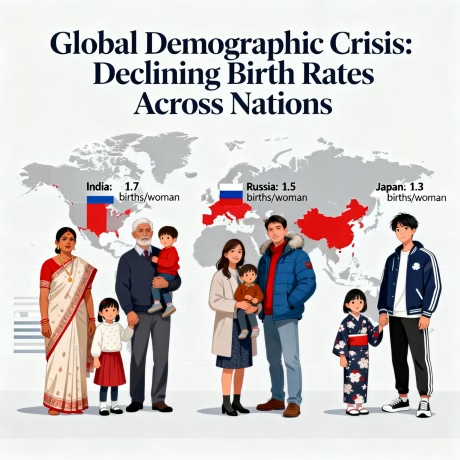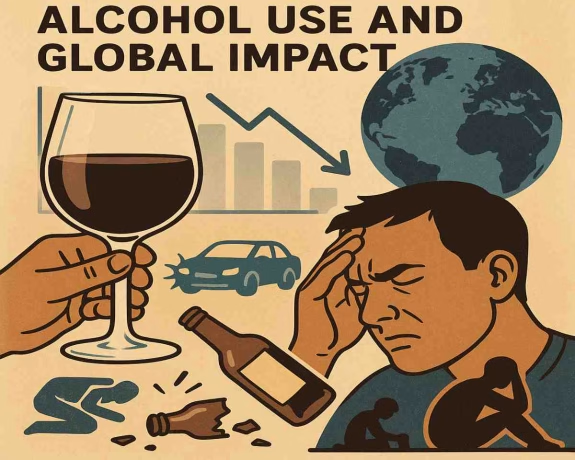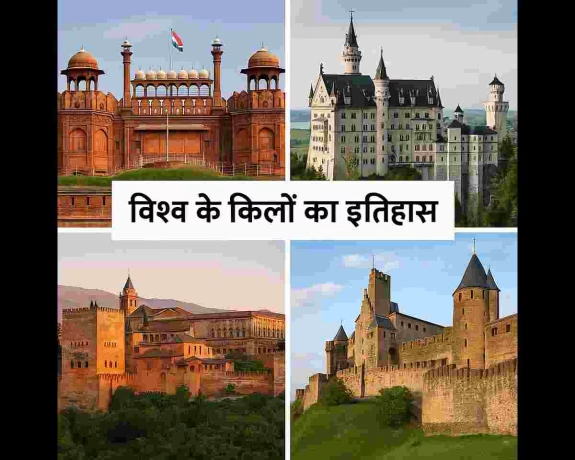
IPTV Desk The Global Population Crisis – Why Birth Rates Are Plummeting The world’s population growth is slowing, and in some regions, it is already shrinking. Declining birth rates, economic pressures, and shifting lifestyles are reshaping global demographics. While overpopulation was once a major concern, many countries are now struggling with aging populations and shrinking workforces. Here’s a deep dive into the crisis, the causes, and the possible future outcomes.
The Global Population Crisis – Why Birth Rates Are Plummeting
“Sex, Science & Billions: The Untold Truth of the Global Sex Economy”
📉 Declining Birth Rates Across the Globe
- In 1950, the global fertility rate was 4.7 children per woman.
- By 2021, this dropped to 2.3, and by 2050, it’s expected to fall below 2.1, the replacement level needed for a stable population. (Source: UN Population Division)
- Countries like South Korea (0.72), Japan (1.26), and China (1.09) have some of the lowest birth rates in history. (OECD, 2023)
🏙️ Urbanization & Economic Pressures
- 80% of people in developed countries live in cities, where high costs, education, and career focus lead to fewer births. (World Bank, 2023)
- Housing crises and job instability in places like Tokyo, New York, and London discourage young couples from starting families.
- Women’s empowerment and higher education levels have led to delayed childbirth and smaller family sizes.
🦠 The Impact of COVID-19 on Birth Rates
- Many experts predicted a lockdown baby boom, but birth rates actually dropped in 2020-2021.
- The U.S. birth rate fell by 4% in 2020, marking the largest single-year decline in 50 years. (CDC, 2021)
- Economic uncertainty and stress caused many couples to postpone or avoid having children.
🧬 Fertility Issues & Declining Sperm Counts
- Male fertility is declining at an alarming rate.
- Studies show sperm counts have fallen by over 50% in the past 50 years. (Human Reproduction Update, 2022)
- Causes include pollution, stress, obesity, and exposure to chemicals like BPA.
- Infertility treatments are on the rise, but costs remain a barrier for many couples.
👴 Aging Populations & Economic Challenges
- Japan has 36% of its population aged 65+, making it the most aged society in the world. (World Bank, 2023)
- China’s workforce shrank for the first time in 2022, raising concerns over future economic stability.
- Countries like Germany, Italy, and South Korea are offering financial incentives for families to boost birth rates.
💰 The Economic Impact of Population Decline
- Fewer young workers mean slower economic growth—as seen in Japan, South Korea, and parts of Europe. (IMF, 2023)
- Retirement and healthcare costs rise, putting pressure on younger generations.
- Countries like Canada and Australia rely on immigration to maintain a stable workforce.
🔮 The Future of the Global Population
- By 2100, the world’s population is expected to peak at 9.7 billion, then decline. (Lancet Study, 2020)
- India will soon overtake China as the most populous country, but its birth rate is also falling.
- Governments will continue to implement pro-natalist policies like tax benefits, extended parental leave, and financial incentives to encourage childbirth.
Final Thoughts
The global population crisis is not just about numbers—it’s about the future of economies, societies, and daily life. As birth rates decline and aging populations grow, countries will need to adapt their policies and economies to ensure long-term stability. The question remains: Will government incentives be enough, or are we heading toward a future with shrinking populations and economic challenges?
What are your thoughts on this issue? Share your opinions! 🔥💭
- “The Silent Crisis: How the Global Population Decline is Reshaping Our Future”
- “Declining Birth Rates: Is the World Heading Towards a Population Collapse?”
- “The Baby Bust: Why the World is Running Out of People Faster Than Expected”
- “From Boom to Bust: The Alarming Decline of Global Birth Rates”
- “Aging Nations, Shrinking Workforces: The Economic Cost of Population Decline”
- “The Great Population Slowdown: What It Means for the Future of Humanity”
- “Global Fertility Crisis: Why Fewer People Are Having Children”
- “End of Growth? How the World is Adapting to a Shrinking Population”
“From Pizza,Sushi,Burger :Unveiling the Birthplaces of 10 Global Culinary Favorites



